A raven perched atop a stockade at old Fort Mackinac on Mackinac Island…
There is so much history on Mackinac Island, and for decades, much jockeying for position and control among the French, British, Native Americans and American colonists! Construction on this fort was begun by the Brits in 1780. It was built to replace Fort Michilimackinac, which had been constructed down closer to the shore of the island by the French in 1714 as a means of controlling the fur trade and European development along the Great Lakes. Fort Mackinac was built by the British during the American Revolutionary War so that they could control the Straits of Mackinac (water passage between Lake Huron and Lake Michigan). The Fort was turned over to the United States in 1796, but recaptured by the British again in 1812.
Read a brief and interesting history of the fort HERE.
If you want to read a first-hand account of what life was like here in the early days, read this exquisitely written biography by Juliette M. Kinzie, WAU-BUN – The Early Day in the Northwest. It is the detailed life of an educated Eastern woman, when as a bride she came to unnamed Wisconsin (with an extended stop at Fort Michilmackinac on Mackinac Island), and shared the experiences of her husband, the Indian agent at Fort Winnebago. Her description of the Indians, army officers, traders, modes of travel, and hardships are enlivened with a sense of humor, vivid feeling for nature, and a just sense of values.

Wau-Bun – The “Early Day” In the Northwest (George Banta Publishing Co., 1930) Newer edition of an old classic originally published in 1856
Below is a view toward the harbor from Fort Mackinac…
In the large stone building which was the “Officer’s Quarters” there is now a visitors’ tea room (Fort Mackinac Tea Room) with an outdoor dining patio. It has good food and reasonable prices, and is operated by the Grand Hotel.
Looking down toward the harbor and town from the patio…
 Approach to the center area of the compound…
Approach to the center area of the compound…
Here are some views from the interior of a house which is inside the compound of the Fort. The rooms, doors, floors and staircase of this house was so similar to ours here at Old Scrolls that I felt I’d come home! Also (like ours) constructed in the mid-1800’s.
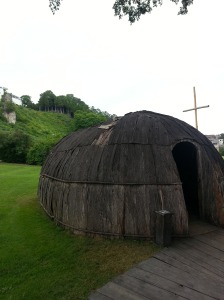
A Native American dwelling in the original style of the area at the edge of the grounds of Fort Mackinac
Another fascinating book to read about Mackinac Island is the historical novel titled The Loon Feather by Iola Fuller (Harcourt Brace, NY, 1940). Winner of the Hopwood Award, this novel is the story of Oneta, daughter of Tecumseh, and granddaughter of the chief of the loon tribe of the Ojibways. It takes place during the fur trading days on Mackinac Island.


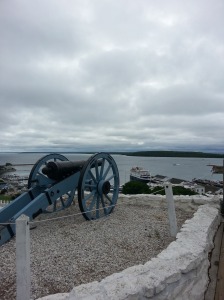
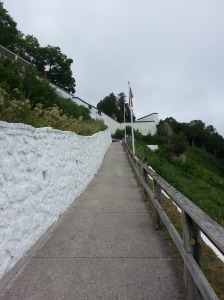

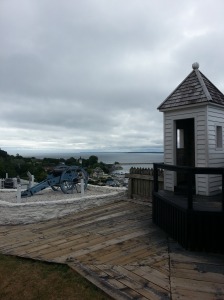


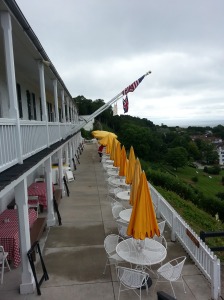

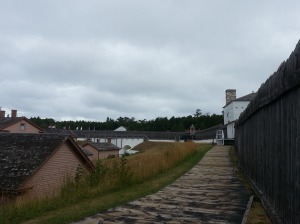




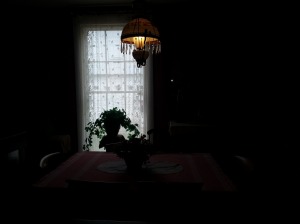


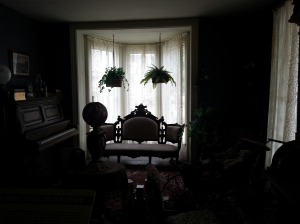



Leave a comment